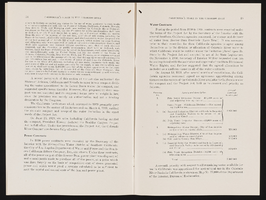Search the Special Collections and Archives Portal
Search Results

Bridge Digital Archive Information
Date
Archival Collection
Description
Text

Morgan H. Mills interview, March 26, 1981: transcript
Date
Archival Collection
Description
On March 26, 1981, Matthew A. Carr interviewed Morgan Mills (b. July 27, 1914 in Grand Junction, Colorado) about his life in Boulder City, Nevada and his work at the Boulder (Hoover) Dam site. Mills speaks primarily about his time working on the dam as a mechanic with the United States Bureau of Reclamation, as a tourist guide with the Boulder City Tourist Bureau and as a musician in local bands. Moreover, Mills speaks about attending the University of Nevada, Reno and playing music there. Lastly, he talks about the Great Depression, how it affected Las Vegas and Boulder City, the development of different infrastructure and the speakeasies in Boulder City during the Prohibition era.
Text
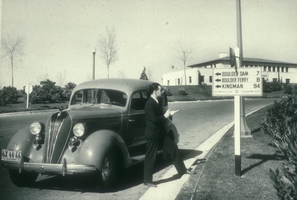
Slide of a man and a car in Government Park, Boulder City, Nevada, circa mid 1930s
Date
Archival Collection
Description
Image

Photograph of the signing of the Six Companies contract, Las Vegas, April 1931
Date
Archival Collection
Description
Image
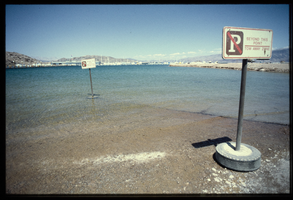
Water overtakes "No Parking" signs along a Lake Mead shoreline, looking northeast in Lake Mead, Nevada: photographic slide
Date
Archival Collection
Description
This series of photographs documents the historic water overflow at Hoover Dam as seen from the Arizona side of the dam. Taken in August of 1983, this overflow marked the first time the spillways were used during a flood. After initially being filled, the spillways were tested once in August of 1941.
Image
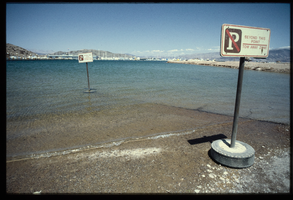
Water overtakes "No Parking" signs along a Lake Mead shoreline, looking northeast in Lake Mead, Nevada: photographic slide
Date
Archival Collection
Description
This series of photographs documents the historic water overflow at Hoover Dam as seen from the Arizona side of the dam. Taken in August of 1983, this overflow marked the first time the spillways were used during a flood. After initially being filled, the spillways were tested once in August of 1941.
Image
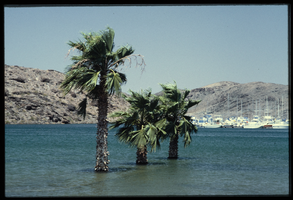
Desert palm trees are surrounded by water near a Lake Mead marina, looking northwest in Lake Mead, Nevada: photographic slide
Date
Archival Collection
Description
This series of photographs documents the historic water overflow at Hoover Dam as seen from the Arizona side of the dam. Taken in August of 1983, this overflow marked the first time the spillways were used during a flood. After initially being filled, the spillways were tested once in August of 1941.
Image
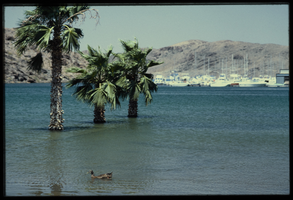
Desert palm trees are surrounded by water near a Lake Mead marina, looking northwest in Lake Mead, Nevada: photographic slide
Date
Archival Collection
Description
This series of photographs documents the historic water overflow at Hoover Dam as seen from the Arizona side of the dam. Taken in August of 1983, this overflow marked the first time the spillways were used during a flood. After initially being filled, the spillways were tested once in August of 1941.
Image
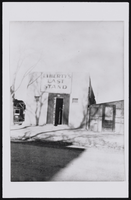
Bootleg bar: photographic print
Date
Archival Collection
Description
Image

